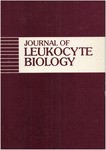-
Views
-
Cite
Cite
Brian K Brandley, Ronald L Schnaar, Cell-Surface Carbohydrates in Cell Recognition and Response, Journal of Leukocyte Biology, Volume 40, Issue 1, July 1986, Pages 97–111, https://doi.org/10.1002/jlb.40.1.97
Close - Share Icon Share
Abstract
Complex carbohydrates coat the surfaces of cells and have the potential to carry the information necessary for cell–cell recognition. Sugar-specific receptors (lectins) are also present on cells, and can interact with sugars on apposing cells. This may result in the adhesion of the two cells via carbohydrates and specific cell-surface receptors. Such carbohydrate-directed cell adhesion appears to be important in many intercellular activities including infection by bacteria and viruses, communication among cells of lower eukaryotes, specific binding of sperm to egg; and recirculation of lymphocytes, among others [50]. New approaches involving synthesis of chemically defined cell-surface analogs, in conjunction with inhibition experiments, are beginning to reveal the mechanics of a potential carbohydrate “language” involved in intercellular interactions.





